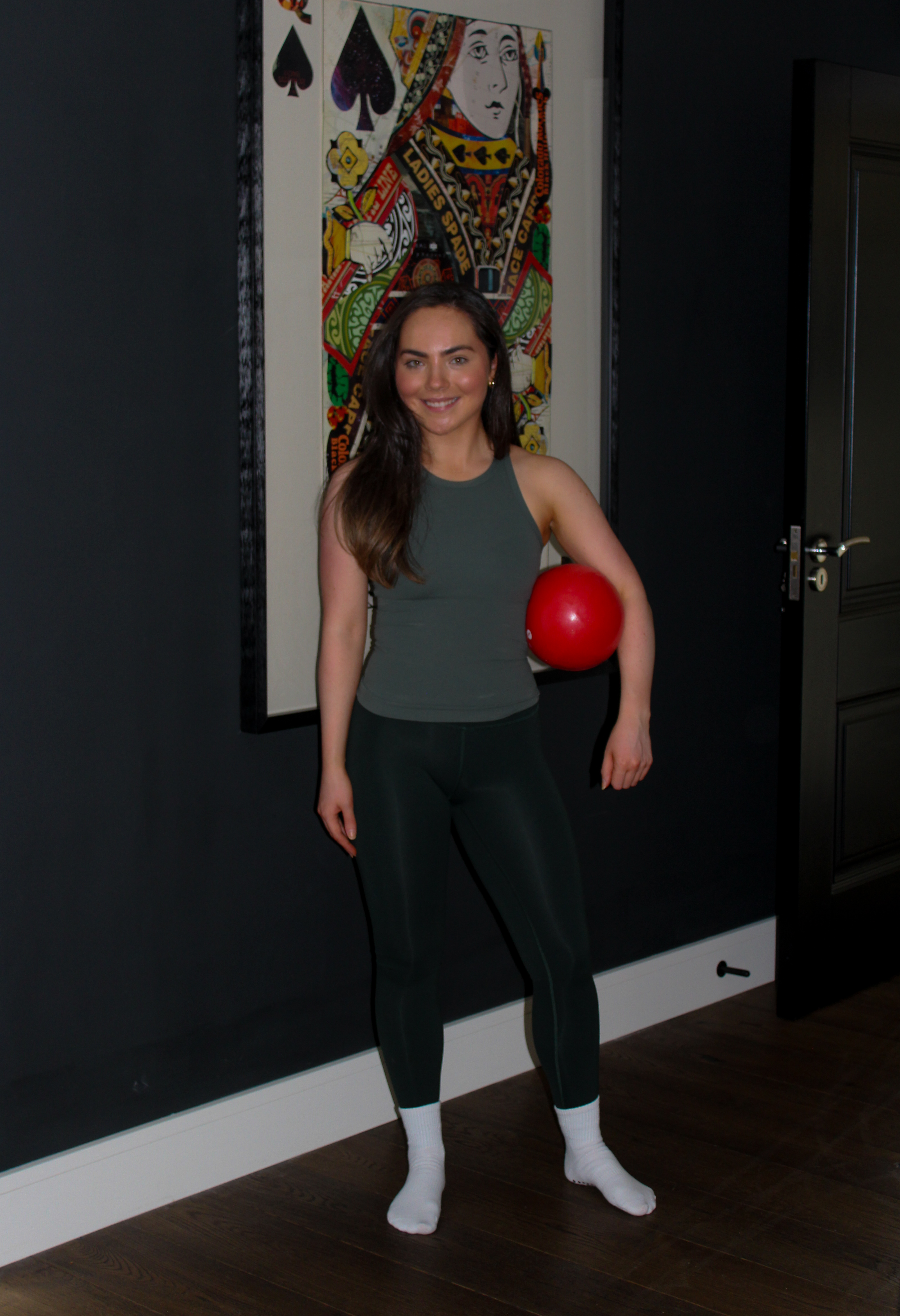The Power of a Playlist in Exercise: Boost your Barre Workout With a Playlist
- Barrebyangela

- Jul 16
- 4 min read

Have you ever abandoned a run because you forgot your headphones?
Would you ever go to a group class without music?
Chances are - absolutely not. Have you ever wondered why this was?
This article aims to outline the power a playlist in exercise - with a particular note and focus on barre. Firstly, the effects of music on the mind and body shall be discussed. Secondly, this article will underscore why exactly this is relevant to your barre workout.*
*It is noted, however, that this research has been conducted in relation to workouts in general - from running, to class kettlebell workouts, and gym sessions etc.
This article only aims to summarise this research and apply it to barre.
The effects of music on performance
Boosted Endurance
Music can increase endurance when synchronous with exercise. For example,
holding a low plie until the beat drops.
Exertion Perception
Have you ever found yourself saying that a playlist got you through a difficult run, session or class? You are right! music has the ability to reduce by 12%, a person’s perception of
their own fatigue. (Les Mills) According to Dr Karageorghis, ‘…the motivational qualities
of music impacted significantly on the interpretation of fatigue symptoms right up to the point of voluntary exhaustion.’
Scientifically, as explained by De Nora, when fatigue sets in, the body begins to realise the symptoms such as increased heart rate, rising lactate level, sweat production, and pain. Signals are sent to the brain that the body is exerted, and this can result in reduced performance due to the pain/fatigue being experienced. Music can make a person feel like they are exerting themselves less, whilst remaining at that same level of intensity that might feel more strenuous without music. (Fritz et al, 2013)
In addition, when exercise is correctly paired with music, our body may make fewer adjustment, leading to energy being used more efficiently, due to the natural
co-ordination of the body.(Human Kinetics) For example, after a few classes, a
participants body will get accustomed to the technique of plies to 128bpm, and
will begin to feel fatigue far less (regardless of the fact that they have been
building physical endurance).
3. Performance
The right choice of music can improve performance, especially when someone finds the music motivating. It can assist with focus, support proper technique, and encourage consistent effort, such as keeping time with the beat during an exercise. This is why many people choose workout playlists with a set BPM (beats per minute). For example, barre classes usually use music at around 128 BPM, as movements are often structured in 8-count cycles (Markman, 2020).
As mentioned earlier, performance can also be improved by lowering the perception of fatigue, something music can help with.
4. Mood
Music also has an effect on mood (Levitin and Tirovolas, 2009). As noted above, choosing the right music for an athlete or class can result in a high-energy and effective session. Participants are often motivated to exercise by the energy and atmosphere created
through music.
Barre and Music
Barre classes often utilise (or should) 128-130 bpm. This is not only because of all the benefits outlined above, but also because barre classes are designed to work to the beat, just like a ballet class. This tempo strikes the perfect balance: it’s fast enough to elevate
your heart rate and keep energy high, but not so fast that participants struggle to stay in sync. It also ensures that muscles aren’t under tension for too long, maintaining a safe and effective workload. The half time (64bpm) is also perfect for isometric holds. The upbeat rhythm keeps motivation high and helps participants stay engaged and moving with intention.
In conclusion, there has been a wealth of research into the effects of music on exercise,
and it is clear that, when used appropriately, music can bring significant benefits such as increased endurance, reduced perception of fatigue, improved performance,
and enhanced mood.
In the context of barre, music has the power to directly influence participants’ performance through these mechanisms. As outlined above, using the correct
tempo not only supports motivation and rhythm but also plays a role in exercise
safety and effectiveness. However, it is also important that music is selected thoughtfully, taking into account the structure of the class, the type of movements involved, and the needs of the participants to maximise its impact.
References
Fritz, T. H., Hardikar, S., Demoucron, M., Niessen, M., Demey, M., Giot, O., Li, Y., Haynes, J. D., Villringer, A., & Leman, M. (2013). Musical agency reduces perceived exertion during strenuous physical performance. Proceedings of the National Academy of Sciences of the United States of America, 110(44), 17784–17789. https://doi.org/10.1073/pnas.1217252110
Karageorghis, C. I. (2008). The scientific application of music in sport and exercise. European Physical Education Review, 14(3), 347–366. https://doi.org/10.1177/1356336X08095670
Karageorghis, C. I., & Priest, D. L. (2012). Music in the exercise domain: A review and synthesis (Part I). International Review of Sport and Exercise Psychology, 5(1), 44–66. https://doi.org/10.1080/1750984X.2011.631026
Levitin, D. J., & Tirovolas, A. K. (2009). Current advances in the cognitive neuroscience of music. Annals of the New York Academy of Sciences, 1156(1), 211–231. https://doi.org/10.1111/j.1749-6632.2009.04417.x
North, A. C., & Hargreaves, D. J. (2008). Music and physical health. In The social and applied psychology of music (pp. 301–311). Oxford University Press.
Terry, P. C., & Karageorghis, C. I. (2011). Music in sport and exercise. In T. Morris & P. C. Terry (Eds.), The new sport and exercise psychology companion (pp. 359–380). Fitness Information Technology.
.png)



Comments